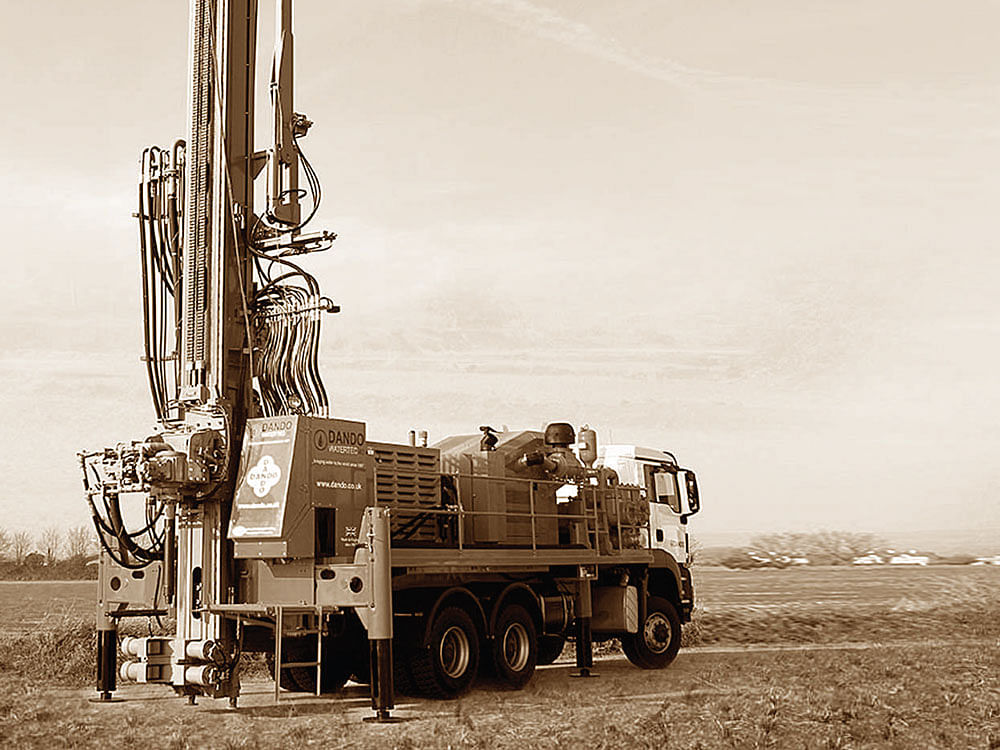
When the water table has depleted dangerously to 1,500 ft and deeper, does the proposal to sink more borewells make any sense? The priority should be on recharging acquifiers, not exploiting them.
Cornered by the impending water crisis in Bengaluru this summer, shaken by the dried up reservoirs, the government has scrambled up a solution: Go underground! Yes, they are talking about borewells again. So what if the water table has depleted beyond redemption.
Unprecedented in scale, the water shortage this year is bound to affect everyone in myriad ways. But scientists, water experts and long-time Bengalureans are unanimous in their views: Borewells just cannot be a solution.
Last month, Chief Minister Siddaramaiah had articulated the solution clearly. New borewells had to be dug by March. For years, the Bruhat Bengaluru Mahanagara Palike (BBMP) and its corporators had done so in wards across Bengaluru.
Despite warnings from several quarters, excessive drilling of borewells has gone unchecked. The water table has dramatically depleted in many areas on the city’s outskirts. Private tankers, by drilling bores on massive scales, have been the game-changers.
Depleting water table
The indications are clear. There are no signs of water even at depths of 1,500 ft and deeper. In areas where the Bangalore Water Supply and Sewerage Board (BWSSB) has no pipeline network, individual borewells and water tankers are the only options. Many of these have dried up.
Anticipating the peaking water demand, tanker operators have hiked their rates. With sources of water disappearing fast, more borewells are being dug up flouting all rules. Residents, both of individual houses and apartments, in the 110 villages dread that the tanker rates could get unaffordable as summer advances.
BWSSB’s contingency plan is to sink more borewells. A survey by the Board found that 938 out of 7,920 borewells in the BBMP limits have become non-functional. The attempt now is to revive these besides drilling about 400 more wells. But that would depend on how the water crisis unfolds over the next three months.
The Karnataka Regulation for Protection of Sources of Drinking Water Act poses a challenge to indiscriminate digging of borewells. But the government machinery could circumvent this, citing water shortage.
Reversing depletion
Can the inevitable depletion in the ground water table level be reversed? This might sound idiotic when the contributing factors for the depletion continue unabated across the city: More trees are being felled for infrastructure projects like never before and efforts to revive lakes are yet to gather pace.
But the Indian Institute of Science (IISc) had scientifically proven that it is possible. A mini forest planted in a two-acre plot near the IISc Centre for Ecological Sciences (CES) had raised the water table from 200 ft to just over 10 ft. The turnaround was remarkable.
The brain behind the project, senior scientist Dr T V Ramachandra explains that green cover is critical for water to percolate and recharge the groundwater. Due to road-widening and infrastructure projects, Bengaluru has lost lakhs of trees.
Loss of green cover also has a direct effect on heating. Measurements inside the mini forest in IISc had shown that the temperature within was two degrees cooler than outside. The implication becomes apparent. The state’s fixation with borewells is an idea whose time has long gone!
Senseless, foolish
Dr Ramachandra dubs it 'senseless' and 'foolish' to believe that borewells will solve the city's water problem. “We have absolutely no right on the acquifier when the lakes are allowed to be encroached,” says the scientist.
Four decades ago, the city, through its intricate network of lakes had the capacity to store 35 tmcft of water. “Today, 79% of those lakes have disappeared. The current storage capacity of the surviving lakes is only about 5 tmcft. Due to silt, that too has reduced to 1.9 tmcft,” he informs, citing a recent IISc study.
Bengaluru's current annual water demand is 18 tmcft. Seventy per cent of this could have been met through rainwater alone if the lakes had remained. Besides rooftop Rainwater Harvesting (RWH), he says, the emphasis should be on restoring the lakes.To address the city's water crisis in the long term, the priority should be on recharging the underground acquifiers and not exploiting them. In areas around active lakes, water becomes available even at depths of 100 ft.
The city generates about 16.04 tmcft of sewage every year. Treating this and options to recycle and reuse could minimise Bengaluru's dependence on water from outside the region.
However, this model of decentralised harvesting of water and reuse of treated sewage is not an attractive proposition for the current breed of decision makers, say water experts.